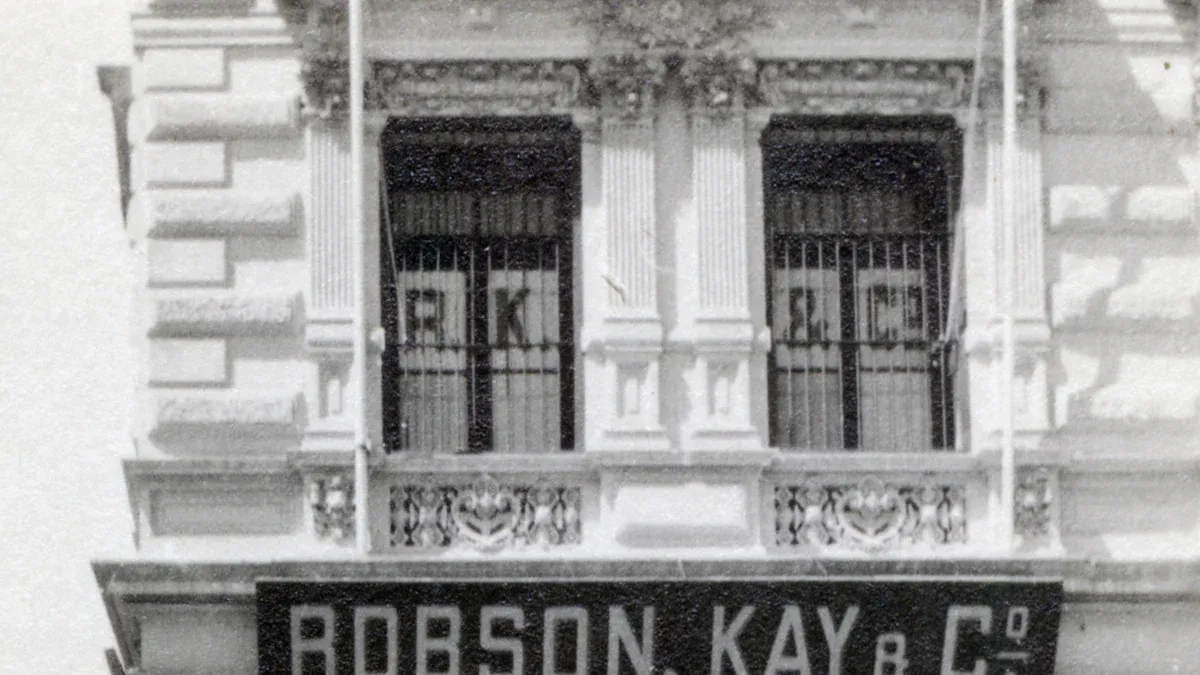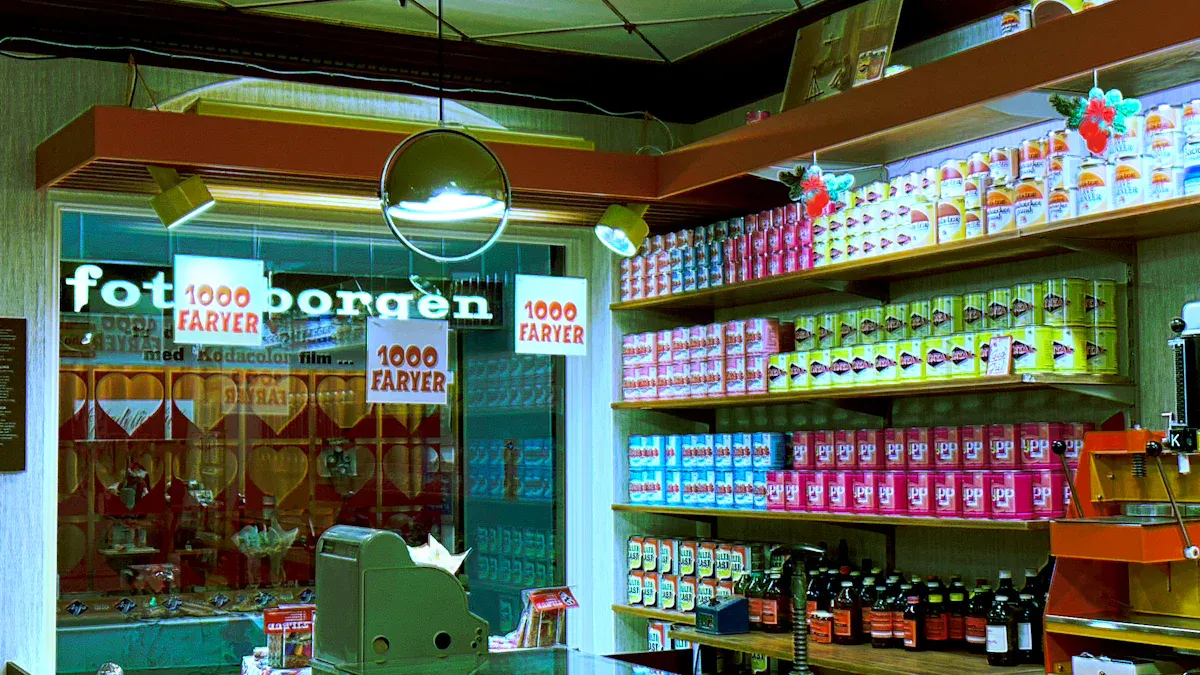The Evolution of Corner Stores

Corner stores have transformed from simple shops into modern convenience hubs that shape daily life. Retailers now use technology like self-checkout, mobile payments, and data analytics to improve convenience and meet changing needs. Many communities rely on the corner store or local bodega for quick access to food and essentials. Recent numbers show this evolution:
Metric | Impact/Value |
|---|---|
Year-over-year increase in sales of prepared food | 12.2% increase |
Increase in visits to Rutter's (early 2024) | 15.6% increase |
Reduction in stockouts via AI inventory management | Up to 50% reduction |
People continue to ask how and why the convenience store keeps changing, and what comes next for these vital places.
Key Takeaways
Corner stores started as small family shops and grew into important community hubs, especially in urban neighborhoods.
Technology like self-checkout and mobile payments helps stores serve customers faster and manage inventory better.
Shoppers now want healthier foods, fresh options, and good prices, so stores adjust their products and services.
Corner stores and bodegas improve access to food and support social connections in many neighborhoods.
The future of corner stores depends on using new technology, offering healthy choices, and staying connected to their communities.
History of Corner Stores

Early Beginnings
Corner stores began as small, family-owned businesses in the 1700s and 1800s. These mom-and-pop shops appeared in new towns across the United States. They sold essential items like groceries, fabrics, toys, and tools. Many people relied on these stores for daily needs. Historical research shows that corner stores became important community hubs, especially in urban minority neighborhoods such as Buffalo and Atlanta. In these places, corner stores filled gaps where full-service grocery stores did not exist. They accepted nutrition assistance programs and helped families during tough economic times. In many African American communities, the corner store was often the only place to buy food and goods. These stores supported social ties and helped neighborhoods stay strong during population changes.
Today, family-owned businesses still play a big role in the market. About 19% of small businesses in America are family owned, and 1.2 million are run by married couples. This shows the lasting impact of the early corner store model.
Rise of Convenience Stores
The birth of convenience stores marked a new era in retail. The first chain, now known as 7-Eleven, started in Dallas in 1927. It began as an ice house storefront and quickly grew by offering longer hours and more products. The timeline below shows key moments in the rise of convenience stores:
Year/Period | Key Events and Innovations |
|---|---|
1927 | Founded as Southland Ice Company in Dallas, operating an ice house storefront. |
1928-1946 | Expansion under the name Tote'm Stores. |
1946 | Renamed 7-Eleven to reflect extended hours (7 am to 11 pm). |
1949 | First convenience store to air a TV commercial promoting extended hours. |
1950s | Added TV tube testers, key-making machines, money orders. |
1963 | Began 24-hour operations. |
1964 | Introduced coffee-to-go. |
1965 | Launched frozen carbonated beverage (Icee/Slurpee). |
1970s | Introduced self-service gasoline, microwave ovens, fountain drinks. |
1980s | Installed ATMs, expanded hot dog offerings. |
1990s | Rolled out fresh food items and prepaid services. |
2000s | Focused on product innovation, health and wellness items. |
2007 | Shifted toward franchising model. |
2010s | Continued growth with new store concepts and acquisitions. |
This timeline highlights the convenience boom and the shift from healthy foods to snacks, gas sales, and new services. Convenience stores, also called c-stores, changed how people shop for essential items and healthy foods.
Local Bodegas
Local bodegas play a unique role in urban neighborhoods. They cluster in densely populated, often low-income areas. Bodegas serve as cultural hubs, especially in Hispanic communities, and reflect immigrant traditions. They provide goods and services tailored to neighborhood needs, often where supermarkets are scarce.
Bodegas act as informal social centers where people gather and build relationships.
They offer credit and community support, reinforcing neighborhood ties.
In many low-income areas, bodegas outnumber supermarkets, showing their importance in the market.
Bodegas help create a sense of belonging and community identity.
They support civic engagement and help keep neighborhoods safe by increasing social connections.
Local bodegas, like corner stores and c-stores, remain vital to the market. They offer convenience, support health, and help neighborhoods thrive.
Drivers of Change
Technology
Technology shapes the way convenience stores operate and serve customers. Modern convenience store design often includes self-checkout kiosks, mobile payment systems, and digital loyalty programs. These tools help c-stores speed up transactions and reduce wait times. Many stores use data analytics to track inventory and predict which products will sell best. This approach helps reduce stockouts and improves the customer experience.
Some stores now offer pay-at-the-pump options, making it easier for drivers to buy fuel without entering the store. Drive-thru windows and online ordering also add new layers of convenience. Omnichannel shopping connects in-store and online experiences, allowing customers to order ahead and pick up items quickly. Technology also supports better inventory management, which is important because inventory costs can reach 50% or more of revenue in the c-stores industry. Efficient systems help stores stay profitable and meet changing market demands.
Consumer Preferences
Consumer habits change over time, and convenience stores must adapt to stay relevant. Shoppers now look for more than just snacks and drinks. Many want fresh food, healthier options, and larger product sizes to save money. Economic uncertainty leads people to shop more selectively, seek discounts, and try private label brands. Brand loyalty has dropped, with many consumers choosing promoted or cheaper items instead of sticking to one brand.
Economic uncertainty drives selective shopping and discount-seeking.
Brand loyalty declines, with 31% buying promoted items and 27% choosing the cheapest options.
Private label brands gain popularity as 20% of shoppers use them to manage expenses.
Bulk or economy size products attract 27% of consumers coping with inflation.
Stores adjust product assortments, promotions, and pricing to meet these new demands.
In-store sales in convenience stores have grown, while fuel sales have dropped. This shift shows that people now spend more on merchandise and food service. Loyalty programs play a big role, especially for Gen Z, who expect brands to offer rewards. Loyal customers spend more, which helps stores grow. Stores like Wawa expand food offerings to meet demand for higher-quality prepared foods. Beverage sales remain strong, showing that innovation in product offerings matters in the market.
Urbanization
Urbanization changes the way people live and shop. As more people move to cities, the need for convenience grows. The U.S. Census tracks urban density and settlement patterns, which helps explain why corner stores and c-stores cluster in busy neighborhoods. Higher population density creates demand for stores that offer quick access to food and essentials.
Increasing urban density leads to mixed-use spaces and community-focused living. Millennials, Gen Z, and older adults all seek convenience in their daily lives. Corner stores adapt by offering accessible retail options within these mixed-use developments. The rise of polycentric urban areas, with many employment centers, also shapes the market. Stores must serve residents in different subcenters, which means adjusting convenience store design and product selection to fit local needs.
Economic Factors
Economic pressures drive many changes in the market. In-store sales reached $287.7 billion in 2023, showing steady growth for convenience stores. Total U.S. convenience store sales hit $860 billion, even as inflation and operating expenses rose. In-store sales now make up a larger share of revenue, while fuel sales have dropped.
Direct Store Operating Expenses increased by 14.5% from 2021 to 2022.
Credit card processing fees rose by 32.4% in 2022, costing stores more each year.
Labor costs increased by 11.8% in 2022, with stores paying much more in wages.
Loyalty program members spend about 38% more than non-members, boosting sales and profits.
Net profit margins for convenience stores range from 3% to 10%, depending on store size and efficiency.
These economic trends push stores to improve efficiency and focus on profitable product categories. Efficient inventory management and smart convenience store design help stores control costs and meet customer needs. The market rewards stores that adapt quickly to changing economic conditions.
Note: The evolution of corner stores and modern convenience stores depends on how well they respond to technology, consumer preferences, urban trends, and economic pressures. Each factor shapes the shopping experience and the design of stores in the market.
Community Impact
Accessibility
Corner stores and local bodegas improve access to food and daily essentials in many neighborhoods. Their strategic locations in urban areas mean people can find quick access to what they need without traveling far. Surveys in Washington, DC, show that all 20 corner stores studied offered some fresh fruit and vegetables, with bananas being the most common. About 40% of these stores sold more than three types of produce, and 70% placed produce near the front or cash register. Programs like Healthy Corners helped 33 stores in 2013, generating over $40,000 in annual sales and serving more than 7,500 healthy snacks each month. The program later expanded to 62 stores, nearly doubling its reach to neighborhoods needing better food access. In Columbus, Ohio, healthy corner store initiatives increased the number of healthy food items by nearly 39 per store, and more people visited these stores. These efforts show how thoughtful design and partnerships can make a difference in food access.
The 2021 CDC survey found that over a quarter of municipalities had a Food Policy Council or similar group supporting food access policies. Larger cities showed even higher rates, with more than half encouraging corner stores to sell healthier foods through tax incentives and grants.
Affordability
Affordability remains a key concern for families shopping at convenience stores and bodegas. A study in Boston compared prices of six basic food items between corner stores and grocery stores in both high- and low-income neighborhoods. The table below shows that prices stayed similar across store types and locations.
Item | Corner Store Price | Grocery Store Price |
|---|---|---|
Milk | Similar | Similar |
Chicken Soup | Similar | Similar |
Bread | Similar | Similar |
Lettuce | Similar | Similar |
Chicken Breast | Similar | Similar |
Infant Formula | Similar | Similar |
While prices do not differ much, corner stores in lower-income areas like Roxbury often have fewer fresh and diverse products. This limits affordability because families cannot always find what they need, even if prices are fair. Access to a full range of products remains a challenge, especially where fewer grocery stores exist.
Social Role
Local bodegas and corner stores play a big part in community building. In one New York City neighborhood, a case study found that bodegas acted as "good neighbors." They offered culturally appropriate foods and informal financial support, helping people feel part of a close-knit community. Owners and customers described these stores as vital resources, especially for those who prefer shopping locally or face barriers to online grocery shopping. Social norms and pride in supporting local businesses help strengthen community ties. Bodegas often serve as informal safety nets, providing support during tough times and helping to create a close-knit community. Many people see these stores as more than just places to shop—they are important for social connections and community identity, much like a farmers market.
Community feedback shows that corner stores and bodegas help people feel connected and safe. Their presence supports social bonds and makes neighborhoods stronger, just as a farmers market does for a town square.
Future of the Convenience Store

Trends
Modern convenience stores continue to evolve in the digital age and future trends point to rapid changes. Automation and artificial intelligence now play a major role in c-stores. Many operators invest in digital payment solutions, mobile ordering, and real-time loyalty programs. These technologies improve inventory management and checkout speed. Some stores test fully automated formats that personalize the shopping experience for each customer.
AI-driven shelf management and dynamic pricing systems help stores respond to demand quickly.
Digital infrastructure and omnichannel capabilities allow c-stores to connect with customers both online and in person.
Sales of soft drinks with prebiotics and probiotics have surged, showing a growing interest in health and wellness.
More shoppers want healthy options, with demand rising from 59% to 66% over seven years.
Customers value excellent service, and 93% say they will return to stores that provide it.
There is a rising preference for local and artisanal products, which adds variety to the market.
Challenges
C-stores face several challenges as they adapt to new market conditions. Store owners must balance their interests with customer needs, especially when promoting healthy foods. Selecting the right products requires research and community engagement. Generating demand for healthy items remains difficult.
Competition from large retailers and rising maintenance costs put pressure on profit margins.
Zoning laws and urban redevelopment can limit where stores operate.
Many traditional corner stores have closed, replaced by larger chains that do not always offer the same access to nutritious foods.
Economic and policy changes often favor new projects over existing small businesses.
Store owners must address both supply and demand issues to remain sustainable.
Opportunities
The market offers many opportunities for revitalizing small-scale retail outlets. Redeveloping older retail spaces into mixed-use environments can attract new tenants and increase foot traffic.
C-stores can expand into tertiary markets where retail space is limited.
Access to capital improves through programs that support startups and rural businesses.
Technical assistance and workforce training help store owners improve operations and employee skills.
Experiential retail, which blends physical and digital experiences, creates engaging environments for customers.
Technology such as augmented reality and interactive displays can enhance convenience store design and the overall shopping experience.
Mixed-use developments that combine retail, residential, and entertainment spaces support the growth of c-stores in the modern market.
The future of the modern convenience store depends on how well it adapts its design, technology, and product offerings to meet changing consumer needs. Stores that focus on health, innovation, and community engagement will remain strong in the evolving market.
Corner stores have changed a lot over time. They now offer more healthy foods and support their communities in new ways. The table below shows how store environments improved after special programs:
Change in Store Environment | Intervention Stores | Comparison Stores |
|---|---|---|
Stocking healthy foods (e.g., cooking spray) | +71% | -50% |
Sales scores of healthy foods | Increased | Decreased |
Corner stores give people easy access to food and act as social centers.
Owners help their neighborhoods and encourage healthy choices.
Many stores face small profit margins but still support local families.
The future looks bright for corner stores that keep adapting and supporting their communities. Will these stores continue to lead positive change in neighborhoods?
FAQ
What is a corner store?
A corner store is a small shop that sells food, drinks, and household items. People often find these stores in neighborhoods. They offer quick access to daily essentials.
How do corner stores help communities?
Corner stores support communities by providing easy access to food and supplies. They also create jobs and help people connect with neighbors. Many stores join local programs to offer healthier food choices.
Why do some people call them bodegas?
People use the word "bodega" in cities like New York. The term comes from Spanish and means "storeroom" or "wine cellar." Bodegas often serve Hispanic communities and reflect their culture.
What changes are coming to convenience stores?
Many stores now use technology like self-checkout and mobile payments. Owners add healthier foods and new services. Stores also focus on making shopping faster and easier for everyone.
See Also
How Time Out Corner Shops Are Transforming City Convenience
What Retailers Should Understand About AI-Driven Corner Stores
Understanding Corner Store Fundamentals And Their Importance Today
